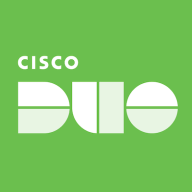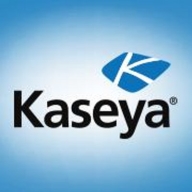Helps reduce the risk of a breach and is easy to deploy and onboardFor our customers, Duo Security is a significant advantage because it provides them with a straightforward method to implement MFA across their entire environment. Moreover, once we delve into the more advanced features of Duo Security, it enables us as a partner to engage in ongoing discussions regarding security strategies with our customers. Initially, we may only introduce them to MFA during the onboarding process. However, as their security strategy evolves, we can leverage Duo to perform additional tasks such as risk-based assessments and deployments, thereby assisting in the development of their security measures. Duo Security helps secure our infrastructure. It serves as our gateway layer of protection, allowing us to understand who is logging in and why. We conduct risk-based assessments on each user to determine whether their actions are appropriate or not. Duo Security is not a comprehensive security solution, but it is undoubtedly a crucial component, a critical layer of security. This aspect resonates with our customers consistently. Their ability to reduce the risk of a breach is of utmost importance. It serves as the primary line of defense. Currently, credential gathering and leaks are widespread in the market. By implementing an MFA solution like Duo Security, we can effectively prevent these issues. When we put a stop to credential harvesting, it becomes much harder for attackers to infiltrate and navigate our network. Therefore, Duo Security acts as an excellent first line of defense. User authentication and device verification are the methods through which we envision our customers navigating in order to prevent identity-based attacks. Initially, when we employ Duo Security, it is a straightforward implementation of multi-factor authentication. As we progress, we enhance security measures by incorporating device risk assessment and potentially even regional assessment. This includes considerations such as whether the login is being attempted from a specific IP address. These gradual enhancements contribute to the establishment of an additional layer of protection. Thus, it is not necessary to implement a completely disruptive strategy right from the start. Instead, it is possible to gradually adopt and integrate this approach, following a crawl, walk, or run methodology. The Duo Security self-service portal helps free up our customers' IT staff time, allowing them to focus on other projects. As a Cisco partner, we have received feedback from our customers that the portal is highly interactive, enabling them to easily navigate and resolve issues. After setting up their Duo environment, we rarely receive callbacks for assistance, as the portal is intuitive and empowers users to handle everything they need on their own. The appealing aspect of Duo Security is its ability to establish trust for every access request, regardless of its origin. It is a cloud-based solution with excellent API integrations. It doesn't matter where or how a user logs in; Duo will be there to protect the user, whether it's through MFA, risk assessment, or similar methods. It is extremely beneficial to our customers that Duo Security considers all resources as external. Our customers frequently inquire about a zero-trust model, and this is a key component of it. Unfortunately, I would love to say that there is a simple solution for zero trust where we can just deploy this solution and be done with it. But that's not the case. It requires a layered approach, and that's what we convey to our customers. Duo Security is definitely a part of that. Duo Security has helped improve our customers' cybersecurity resilience. Internally, it protects our users from accessing sales operations-based environments. Additionally, our customers use it regularly to protect business-critical applications.


